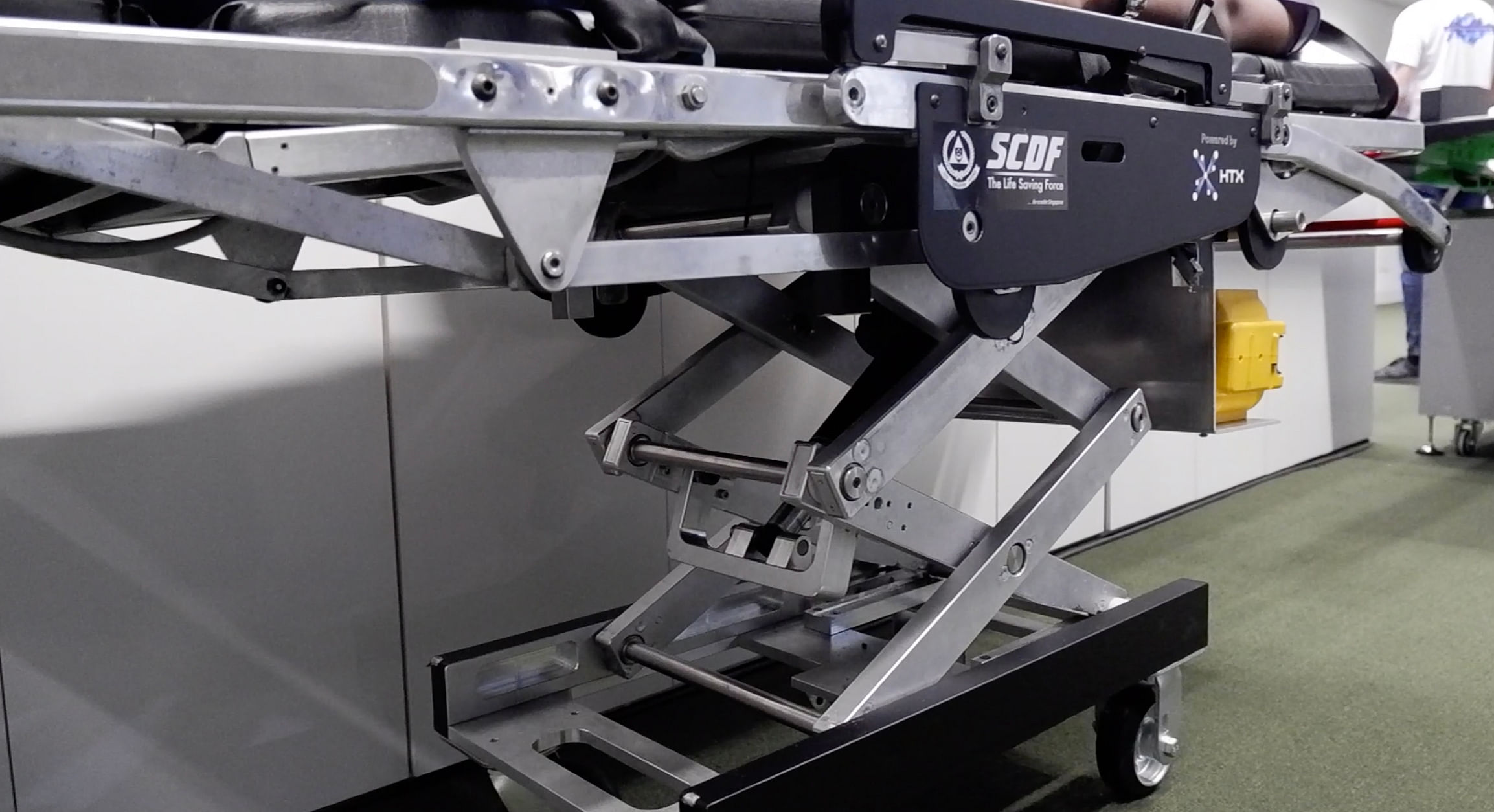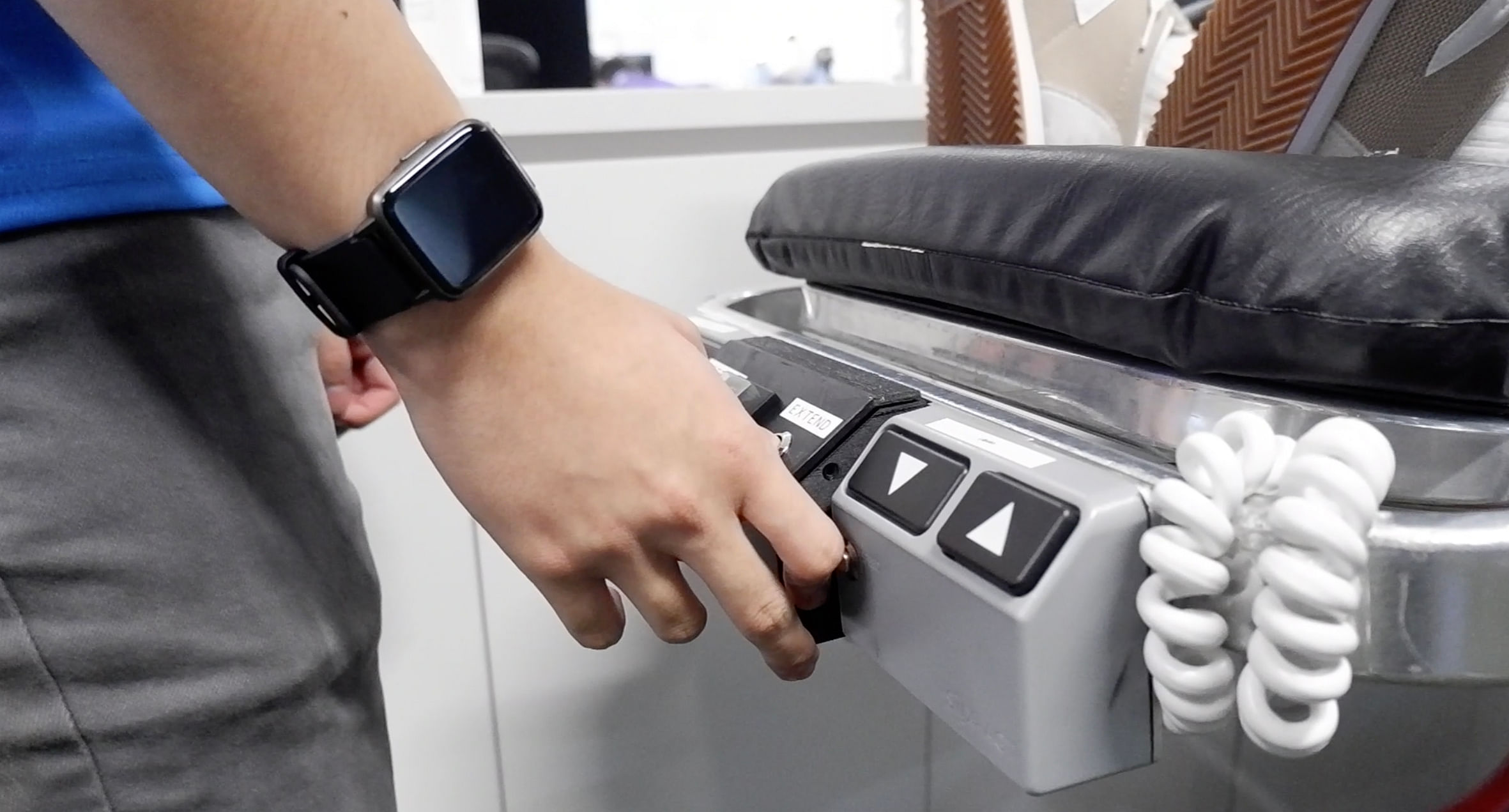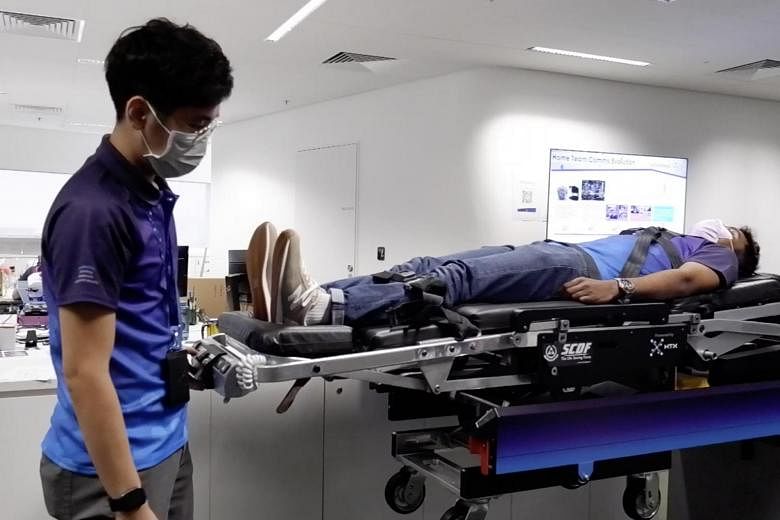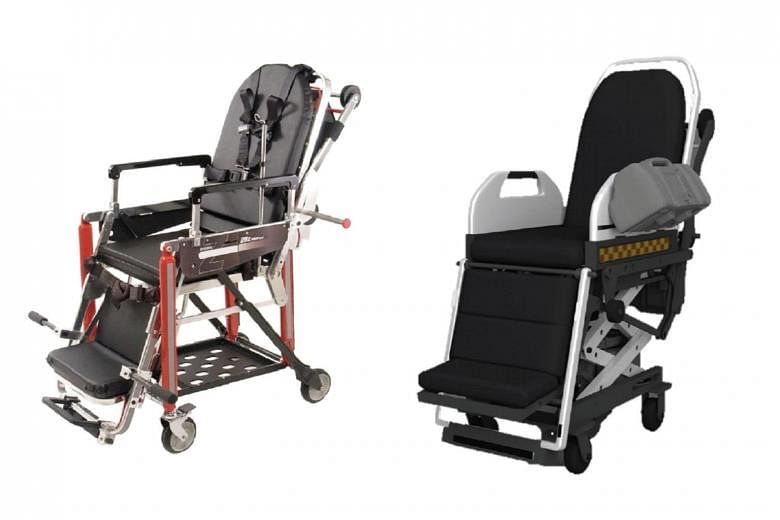SINGAPORE - It may soon take just one person instead of three to operate a stretcher in emergencies, and patients can also expect better and safer care.
A motorised stretcher developed by the Home Team Science and Technology Agency (HTX) will be trialled in the coming months.
The working prototype, which was developed in just four months by HTX, requires just one person to load and unload a patient from an ambulance.
The current stretchers being used by the Singapore Civil Defence Force (SCDF) require a three-man crew to do the same thing.
Consulting SCDF servicemen on the ground, HTX found that prolonged operations using the manual stretchers led to them suffering physical fatigue and, in some cases, injuries.
There were also safety concerns when a patient had to be carried on a stretcher over obstacles and challenging terrain, or moved from a height onto the old stretcher, which could not be adjusted as easily.
Dr Daniel Teo, the head of Ground Systems at HTX's Robotics, Automation and Unmanned Systems Centre of Expertise, said the motorised stretcher was one of the many projects undertaken by HTX to aid the Home Team in saving lives.
"We developed the motorised stretcher with SCDF in mind," he added.
"The motorised stretcher is designed to be easy to deploy and nimble to suit the local terrain. It will enhance the conveyance experience for both the patient and the operator."
In 2020, the SCDF responded to more than 190,000 emergency calls, of which about 92 per cent involved true emergencies.
Dr Teo said that the motorised stretcher was designed so that it could fit into most lifts here, including the smaller lifts found in older buildings.
It has a scissor leg mechanism that removes the need for operators to lift the stretcher up and down, and allows them to control and adjust the height with the push of a button.


There is also a power-assistive wheel, allowing personnel to move the stretcher around with less force.
Assistant Commissioner Yong Meng Wah, director of Emergency Medical Services at SCDF, said the motorised stretcher will allow the SCDF to operate more efficiently.
"The safety and well-being of our personnel have a direct impact on the quality of services we provide to the public," he said.
"It is crucial to keep pace with the public's increasing demand for emergency medical services and the evolving operational terrain. The new motorised stretcher will allow our personnel to work more efficiently and safely amid such challenges."
HTX develops science and technology capabilities for the Home Team.
For instance, in collaboration with Veredus Laboratories in March 2020, the agency developed the first Covid-19 test kits used at border checkpoints here.



